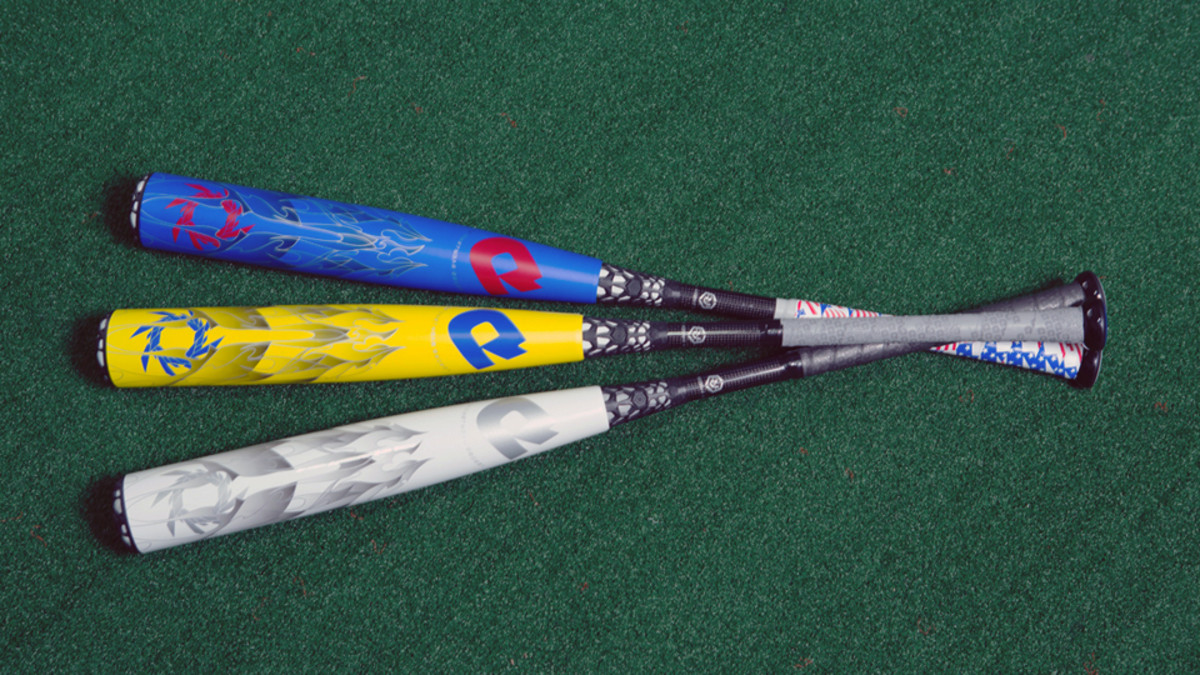Wilson brings fan-fueled custom designs to high-tech baseball bats
High performance and high technology in bats—whether baseball, fast-pitch or slow-pitch—has driven the market. Wilson Sporting Goods, owners of DeMarini, wanted to add in a little personality, becoming the first to offer full customization of its performance line of baseball bats, adding to the customization they already offer with gloves.
Ali Brewer, of Wilson’s baseball/softball division, tells SI.com the success found in customizing gloves wasn’t easy to translate to bats, but having a U.S.-based DeMarini manufacturing plant helped things come together.
“Typically bats are a high-performance category focused on technology and innovation,” Brewer says. “The focus has been on making the ball go far for the kids. Being in the United States, we feel like this is something we can do.”
Jim Hackett, Wilson’s baseball/softball general manager, tells SI.com the big change for them, since they are the only bat manufacturer already making all their aluminum and composites in the U.S., was changing the graphic application process as part of the paint line within the DeMarini facility located in Hillsboro, Oregon.
“The coordination of getting one-bat orders at a time involves integrating our consumer interface with the factory floor,” he says. “That is no small task.”
[daily_cut]Wilson, then, changed the mentality of its factory by handling single orders at the same time it was creating stock models.
As Wilson opened up more creative options for consumers, it made the logistics of creating the bat more complex. Brewer says that a typical factory will run thousands of barrels through a paint line, all bathing in the same color. Now, depending on the order run, the customized bats open up the possibility of needing up to about 16 different paint line runs. From there, the specific color of the barrel gets matched with custom-made knobs and end caps, personalized by the consumer, and grips and labels.
“One model might have five sizes or more and each of those models has 15 colors or grips sizes,” Hackett says. “As you add models, the complexity grows exponentially.”
The customization of high performance bats, which Wilson opened for the first time in mid-February, is new to the industry, a big jump from customization of ball gloves, which multiple companies have done for years.
Brewer says the glove-making process always starts with a strip of leather, no matter the glove, and gets handmade. “The process (of customization) isn’t any different, you are just cutting different colors of leather,” she says. “The personal application does change the process slightly, but they are all handmade.”
Xero Gravity planning to build largest action sports resort ever
For a bat, though, each piece comes with a unique weight and technology, requiring the mixing and matching that heightens the complexity.
But it all proves worth it, Wilson says. Players have customized equipment for years, whether with a Sharpie or some other ingenious way. “I would anticipate there would be a hunger for more personalization,” Hackett says. “Our goal is to build on that need and offer more and more products that help enhance the experience of playing baseball and softball. Customization is becoming a big part of that.”
Think back about 15 years ago, Hackett suggests. Nearly all batting helmets were navy. All the gloves were brown. The bats were raw-looking aluminum. Today, customization has taken over.
“The players want it,” she says. “It is our job to make it happen.”
Tim Newcomb covers stadiums, design and gear for Sports Illustrated. Follow him on Twitter at @tdnewcomb.





